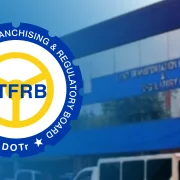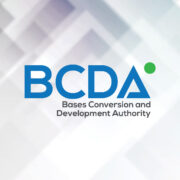Beyond the family circle: Professionalizing management in family businesses
Family businesses are the backbone of many economies worldwide, combining legacy, tradition and entrepreneurship. However, one of the biggest challenges they face is professionalizing management while maintaining the family’s values and vision.
The struggle between legacy and modern management
Many family businesses start as small enterprises, with founders making decisions based on intuition and experience. As the business grows, the need for structured management, formalized decision-making processes and external expertise increases. However, family businesses often resist these changes due to concerns about losing control, diluting values or creating unnecessary complexity.
Why professionalizing management is critical
- Scalability and growth: Informal management structures can work in the early stages, but as the company expands, inefficiencies become apparent. Implementing structured leadership helps streamline operations, making the company more scalable.
- Risk mitigation: Relying on a single person or a small group of family members for decision-making can create significant vulnerabilities. Professional management distributes responsibility and ensures that business continuity is not dependent on a single individual.
- Attracting and retaining talent: Talented professionals may hesitate to join a family business if decision-making is opaque or nepotism dominates promotions. A merit-based system fosters a stronger, more motivated workforce.
Common challenges in professionalization
1. Reluctance to let go
Many founders struggle with handing over key responsibilities. Transitioning to professional management does not mean sidelining family leadership, but rather redefining roles in a way that benefits the business.
2. Balancing family involvement and meritocracy
Maintaining a role for family members while implementing professional standards can be tricky. Companies must create clear job descriptions, performance reviews and career progression paths to ensure that all employees, including family members, are evaluated fairly.
3. Resistance to external expertise
Some family businesses resist hiring external executives or advisors due to fear of losing control. However, seasoned professionals bring industry knowledge, best practices and strategic insights that can significantly enhance decision-making.
4. Shifting from intuitive to data-driven decision making
Many family-run businesses rely on gut feeling and past experiences. While intuition is valuable, integrating data-driven insights and structured planning can lead to better long-term results.

Steps to successfully professionalize a family business
1. Establish clear governance structures
- Define roles for family members versus external executives.
- Implement a board of directors with independent advisors.
- Set up committees for finance, strategy and operations.
2. Create a transition plan
- Develop a road map for integrating external professionals.
- Offer mentoring programs where experienced family members guide incoming executives.
- Clearly define succession planning to ensure a smooth handover of leadership.
3. Foster a performance-oriented culture
- Establish key performance indicators (KPIs) for all employees, including family members.
- Encourage accountability and ensure promotions are based on merit.
- Conduct regular performance evaluations and provide structured feedback.
- The carrot and the stick approach: Many family businesses mistakenly reward loyalty over competence, leading to stagnation. Instead, companies should foster a meritocratic culture that prioritizes performance-based rewards. Employees, including family members, should be incentivized through fair compensation, recognition and career growth opportunities, ensuring the business thrives based on competence rather than family ties.
4. Leverage external expertise
- Engage management consultants or business advisors to assess areas of improvement.
- Encourage participation in industry conferences and executive training programs.
- Learn from successful family businesses that have undergone similar transitions.
5. Communicate the vision clearly
- Ensure that all stakeholders, including employees and family members, understand why professionalization is necessary.
- Address concerns proactively and highlight long-term benefits.
- Promote a mindset shift that views professionalization as an evolution rather than a loss of tradition.
Case study: A family business that successfully professionalized
A leading consumer goods family business in Asia struggled with succession planning and external leadership integration. Initially, there was resistance from senior family members who feared that outside executives would alter the company’s identity. However, by gradually incorporating external advisors, setting up a professional board and defining family roles, the business expanded into new markets and increased its valuation significantly. Today, it stands as a prime example of balancing tradition with modern management.
Case study: A European manufacturing giant’s transformation
A multigenerational family-owned manufacturing company in Europe faced stagnation due to outdated management practices and resistance to technological advancements. The company was heavily reliant on family members, many of whom lacked the necessary expertise to navigate modern industry challenges. Recognizing the need for change, they brought in a professional CEO with extensive experience in manufacturing.
Despite initial pushback, the CEO worked closely with the family to create a structured governance framework. They implemented data-driven decision-making, invested in automation and introduced professional leadership in key departments. Within five years, the company saw record revenue growth, improved operational efficiency, and positioned itself as an industry leader while still retaining its core family values.
5 to thrive: Practical steps to professionalize your family business
1. Define clear roles and responsibilities
- Establish distinct job descriptions for family members and professionals.
- Ensure that every position is filled based on merit and expertise.
2. Build a strong governance structure
- Implement a professional board of directors with a mix of family and independent advisors.
- Create committees to oversee critical areas like finance, strategy and human resources.
3. Develop a transition and succession plan
- Outline a clear path for leadership transitions.
- Provide training and mentorship for next-generation leaders.
4. Encourage a culture of performance and accountability
- Set measurable goals for all employees.
- Conduct regular performance reviews and offer constructive feedback.
- Implement a performance-based reward system to motivate and retain top talent.
5. Embrace external expertise and innovation
- Hire industry experts to bring in fresh perspectives.
- Invest in new technologies and industry best practices to stay competitive.
Tom Oliver, a “global management guru” (Bloomberg), is the chair of The Tom Oliver Group, the trusted advisor and counselor to many of the world’s most influential family businesses, medium-sized enterprises, market leaders and global conglomerates. For more information and inquiries: www.TomOliverGroup.com or email Tom.Oliver@inquirer.com.ph.


















